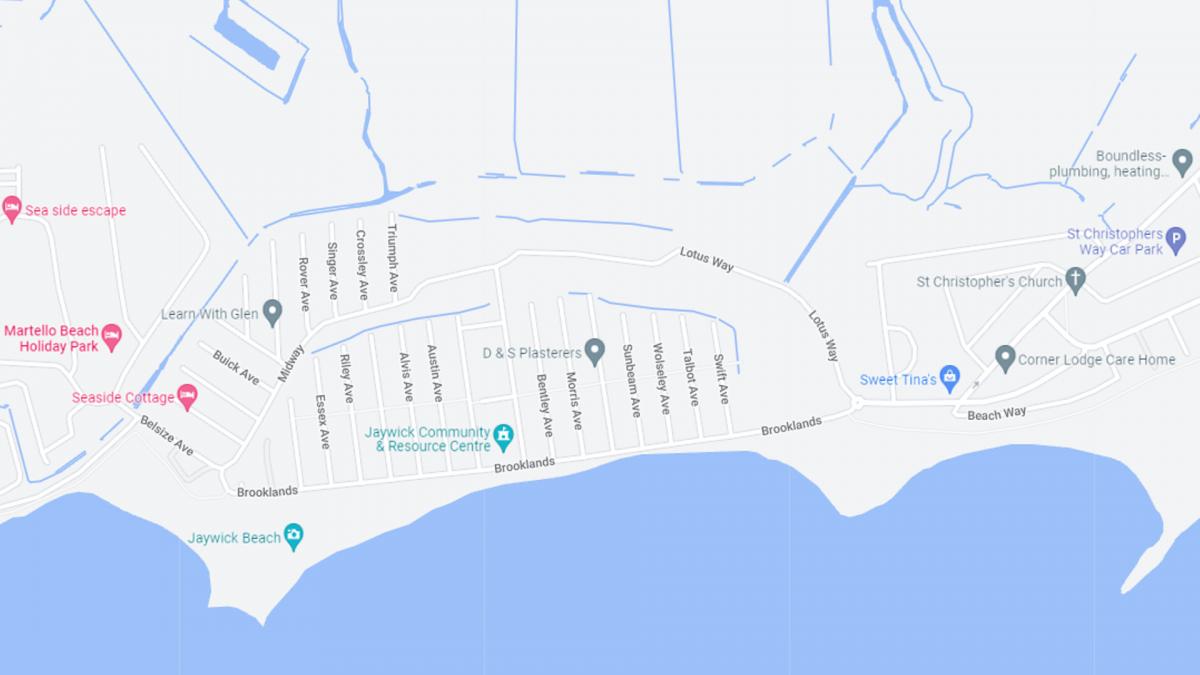The Suffolk and north Essex coastline is an enchanting piece of land, with many curious and interesting sites to see along its shore.
Here are seven strange things on the Suffolk and north Essex coast.
1. Jaywick's street layout

When the modern village of Jaywick was founded in 1928 it was intended to be a holiday resort for factory workers from the East End of London, the heart of Britain's car industry.
From the sky, it appears this inspired the seaside village's construction, as the oldest section of it is laid out like a car radiator – with all the streets named after British carmakers.
2. The Principality of Sealand

The Principality of Sealand is a self-declared independent nation that was founded on a Second World War anti-aircraft platform by Roy Bates in the 1960s.
Visible from the Suffolk coast, Sealand, which has little to no international recognition as its own country, has been used as a pirate radio station, a data farm and even a skate park over the years.
3. The hidden Martello tower in Felixstowe

The Bartlett Hospital, which is now a block of apartments, hides a secret as part of its foundations.
Built in the 1930s as a convalescent home using a bequest of £250,000 from Dr John Bartlett, a local surgeon, the hospital is unique in the fact that it is built on top of a 19th century Martello tower.
There are rumours that when the hospital's morgue was full, the tower filled the role.
4. Orford Ness listening station

Looking down the coast from Orford, you'll see the thin towers that make up the Orford Ness listening station, codenamed Cobra Mist.
Built to scan the skies of Eastern Europe over the horizon, when the system was first turned on in 1972 it was plagued with noise problems, the source of which could never be found. The project was abandoned in 1973.
Since then it has been used as a broadcast station for the Foreign Office and the BBC World Service, and was sold to a private company in 2015.
5. Maggi Hambling's Scallop

Made as a memorial to Benjamin Britten, the Scallop stands 4m tall on Aldeburgh beach, close to the composer's home.
Designer Maggi Hambling thinks about her sculpture as a conversation with the sea, stating that at the centre of the piece a visitor can sit and listen to the focused sound of the wind and waves.
The Scallop is also one of most controversial pieces of art in the UK, and was vandalised twelve times in the first seven years it stood.
6. Thorpeness

Originating as a tiny fishing hamlet, Thorpeness gained its distinctive character when it was developed into a holiday village by Glencairn Stuart Ogilvie, a Scottish barrister and railway baron.
The expansion involved the construction of a golf course, several holiday houses, an artificial lake, a swimming pool and a railway station, which closed in 1960.
It is also home to the House in the Clouds, which was originally a water tower but has been converted into holiday accommodation.
7. The lost city of Dunwich

Not so much on the coast as in the sea, the lost city of Dunwich was once a bustling medieval metropolis and now is barely a village.
About 6,000 people lived there in the 12th century, but during a major storm surge, known as Saint Marcellus's flood, about half of the town was washed away.






Comments: Our rules
We want our comments to be a lively and valuable part of our community - a place where readers can debate and engage with the most important local issues. The ability to comment on our stories is a privilege, not a right, however, and that privilege may be withdrawn if it is abused or misused.
Please report any comments that break our rules.
Read the rules here